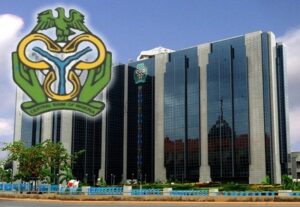CBN’s FX policy drives 91% increase in autonomous market inflows
By Sodiq Adelakun
The Central Bank of Nigeria’s (CBN) FX policy programme, known as RT 200, has led to a significant increase of 91.21 percent in net foreign exchange inflow through the autonomous market over the past five months.
This has resulted in the depreciation of the Naira, which fell to N1,008 per dollar on Thursday and remained at the same rate on Friday at the parallel market, commonly referred to as the black market.
Meanwhile, at the Investors’ and Exporters’ (I&E) FX window, the Naira depreciated by 2.68 percent, with the dollar being quoted at N775.31 on Thursday compared to N755.08 on Wednesday, according to data from the FMDQ.
Data from the economic report of the CBN showed that net FX inflow of US$3.92 billion was recorded in the autonomous market, compared with US$2.05 billion in April.
The Autonomous FX market according to FMDQ comprises recognised FX trading segments, including but not limited to the Inter-bank market, the I&E FX window and any such approved and recognised trading segment as may be defined.
According to the report, autonomous inflow increased by 87.2 per cent to US$4.33 billion in the month under review from US$2.31 billion in the preceding month. Similarly, autonomous outflow increased to US$0.41 billion from US$0.26 billion in April.
Muda Yusuf, Director/Chief executive officer of the Centre for the Promotion of Private Enterprise, said autonomous inflows come outside the government’s earnings of FX. It comes from private sources unlike remittances that come from oil, being Nigeria’s major source of FX.
“FX from oil goes into federation accounts and it is converted into official foreign exchange reserves. When other companies bring money through the CBN or I&E window that is what is autonomous inflow,” he said.
Speaking on phone, he said, “it is possible that the inflows were driven by government incentives like the RT200. The CBN spent huge money for the incentives to encourage those who bring in FX. Maybe it was the incentive that encouraged them to bring in FX.
“The question is when they bring in the FX, did they make it available on the I&E window? Some of those inflows come in, documented as inflows but it sits with the companies and they use it for their own importation because there is no incentive for them to bring in FX and dump it in the I&E window at N460. It does not make sense. I think the regulation allows them to bring it and use it for their own import.”
The RT 200 program or race to $200 billion in FX repatriation was introduced with the aim of ensuring that Nigeria achieves the goal of $200 billion in FX repatriation, exclusively from non-oil exports in 3-5 years.
According to the report, foreign exchange inflows through the Central Bank decreased by 27.9 per cent to US$1.70 billion in May 2023, from US$2.36 billion in April. Outflow through the Bank fell by 15.2 per cent to US$2.03 billion, from US$2.39 billion in April. As such, the CBN recorded a net outflow of US$0.33 billion, compared with a net outflow of US$0.03 billion in the preceding month.
The report noted that foreign exchange flow through the economy recorded a net inflow of US$3.59 billion, compared with US$2.02 billion in the preceding period. Aggregate foreign exchange inflow into the economy increased by 29.1 per cent to US$6.03 billion in May 2023, from US$4.67 billion in the preceding month. However, foreign exchange outflow fell by 8.2 per cent to US$2.44 billion from US$2.65 billion in the preceding month.
The exchange rate of the naira to the US dollar remained relatively stable at the I&E window, the report stated. The average exchange rate of the naira per US dollar at the I&E window stood at N462.01/US$, compared with N460.96/US$ in the preceding month. The average foreign exchange turnover at the I&E window increased by 33.3 per cent to US$127.47 million, compared with US$95.60 million in April.




